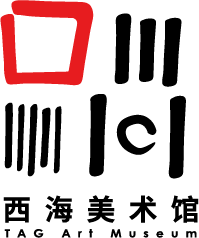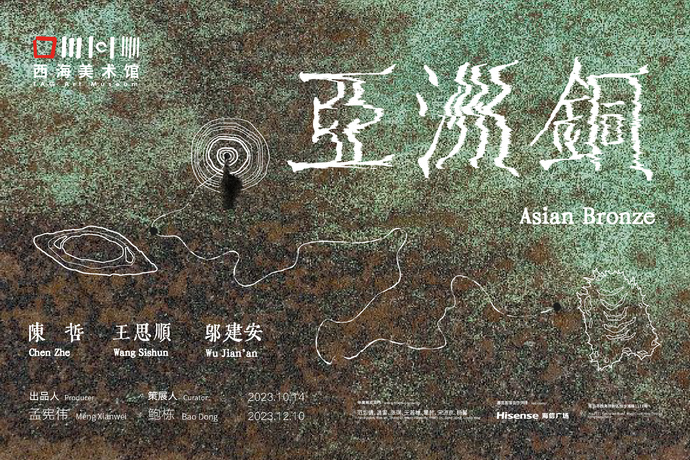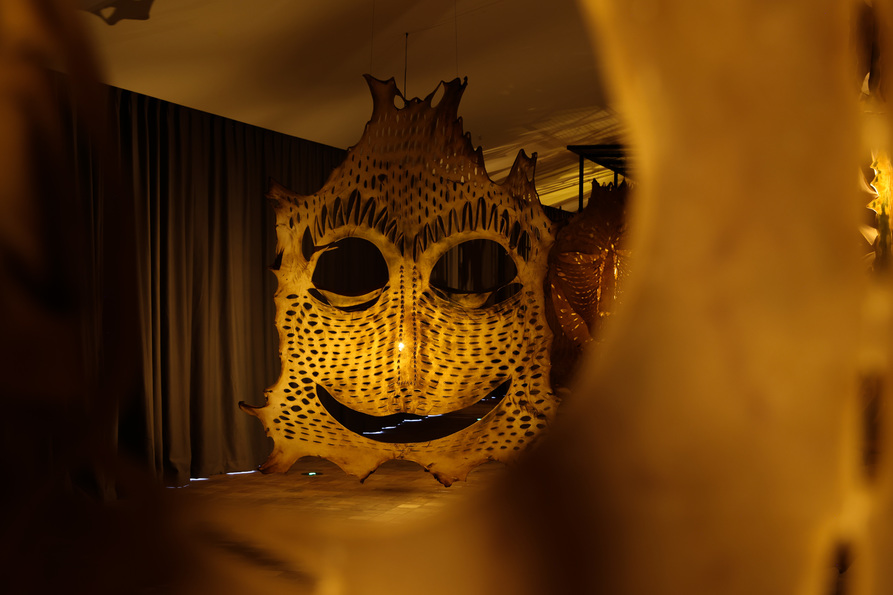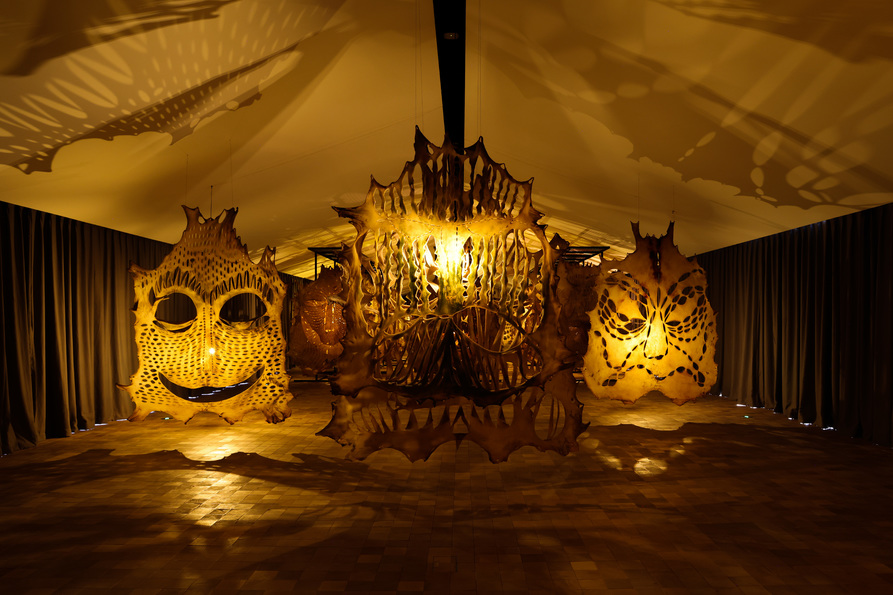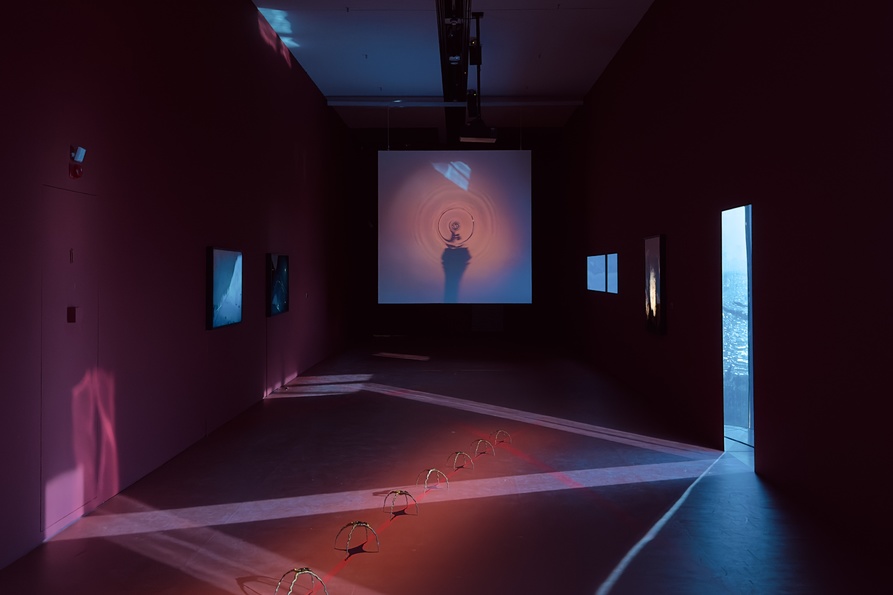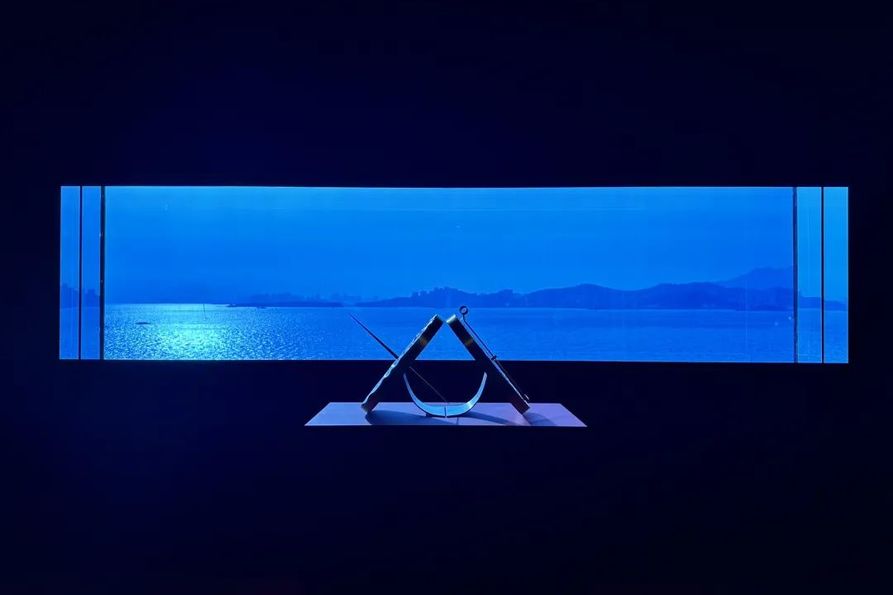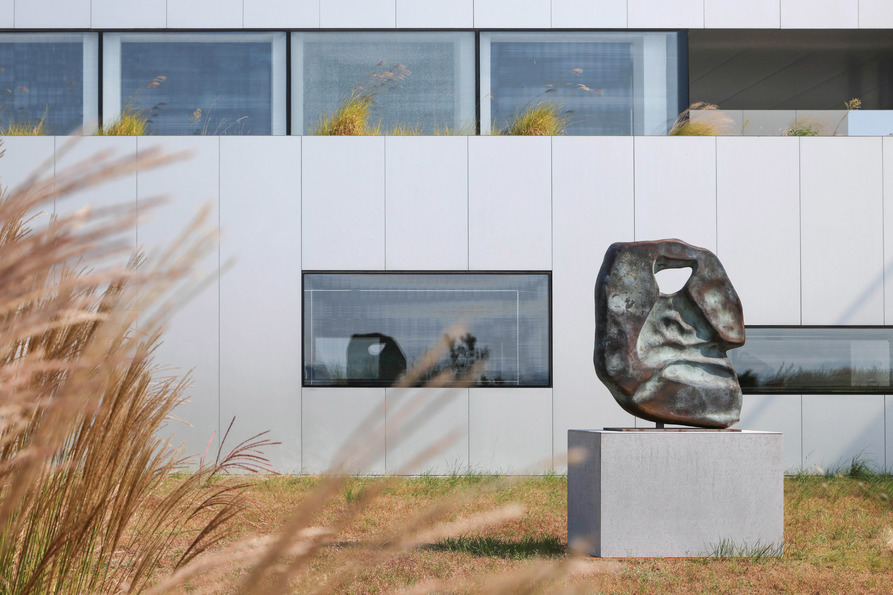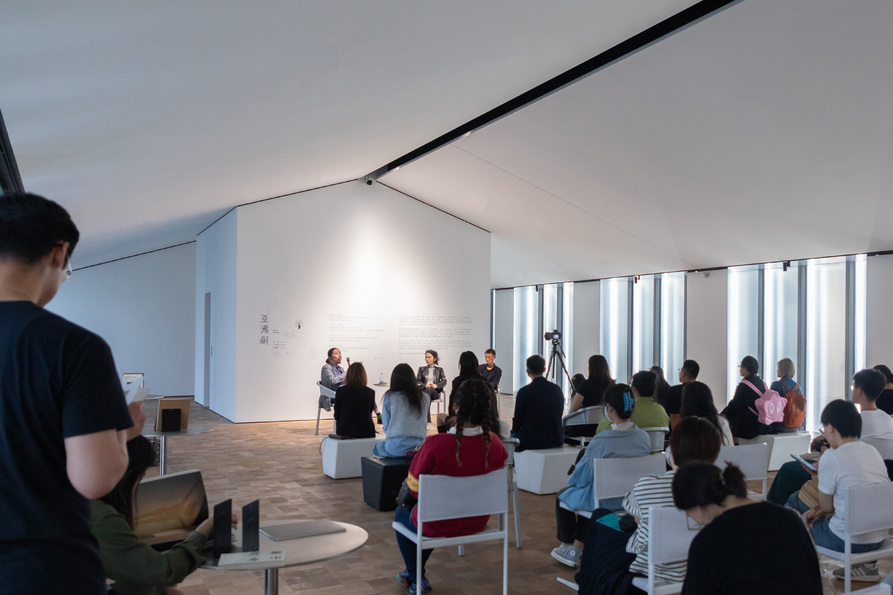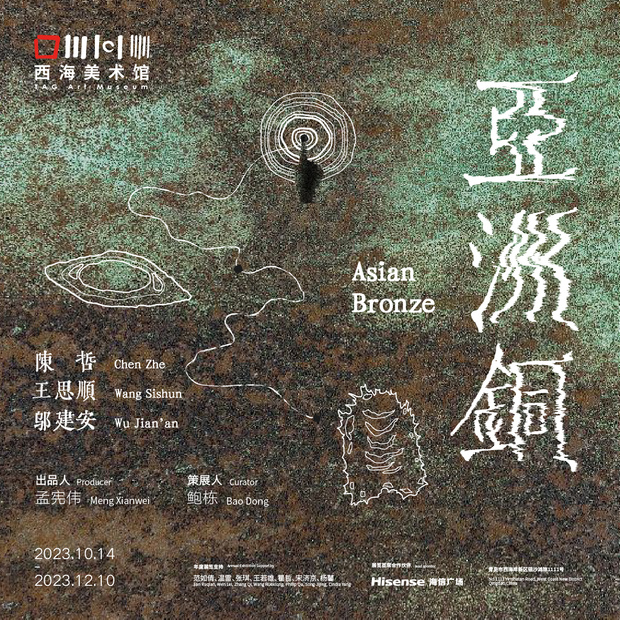The Opening of the “Asian Bronze” at the TAG Art Museum!
On October 14th, the maiden exhibition of the new art program “Three Person Exhibition” at the TAG Art Museum, the “Asian Bronze”, officially opened.
The title of the exhibition, “Asian Bronze”, comes from an extension of Haizi's poem of the same name. Curator Bao Dong invited three artists in the field of contemporary art, including Chen Zhe, Wang Sishun, and Wu Jian'an, who choose different forms of sculpture, photography and imaging devices. Around the image of “Asian Bronze”, the three artists had a dialogue with the three exhibition spaces of the art museum of highly differences and personality.
On the day of the opening event, curator Bao Dong conducted an on-site tour for the audience, and made his speech by centering on the exhibition theme, artwork concepts and spatial design. “In Haizi's poem 'Asian Bronze', we can see his focus on the metaphysical pursuit of Eastern culture and its contained macro spirit. This exhibition is deeply related to the solid local cultural prototypes in the poetic imagery.”
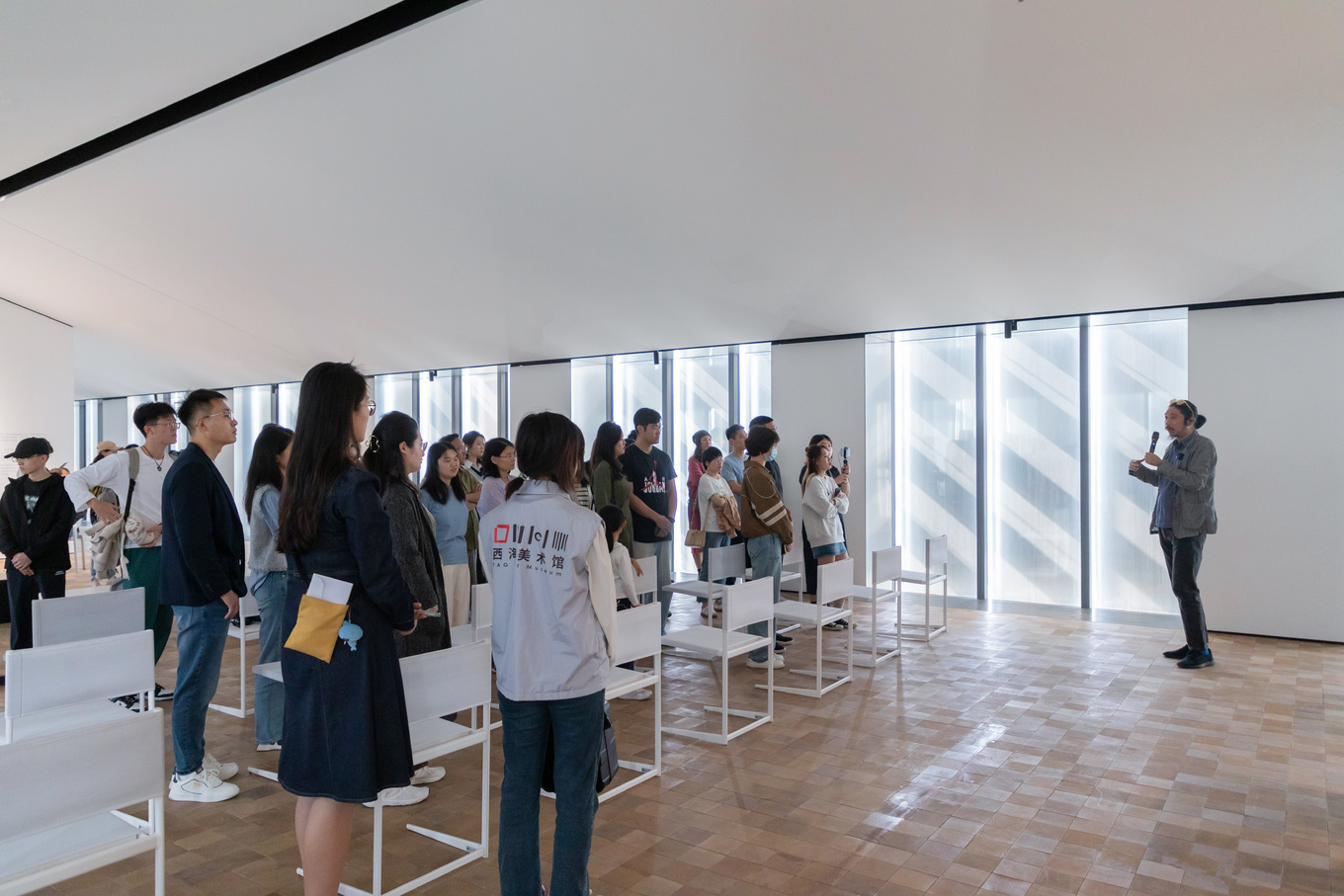
Curator Bao Dong guides the exhibition. Image©️Chao Qixuan
The three artists have been exploring the tacit understanding and resonance among matter, nature, geography, astronomy and spirit, methods, and sensibility. By focusing on the relationship between personal experience and the world around them, they have drawn inspiration from the history of human civilization, making efforts to connect with the current era and people’s subconscious. They learnt the thoughts, morals, and ways of behavior of ancient people and then can better understand themselves by observing their own behavior, thoughts and emotions.
At the same time, from the perspective of the interaction between art works and space, the curator made his discussion, “Through the works of three artists, this exhibition engages in an interesting dialogue with the architecture itself. Jean Nouvel, the architect of the TAG Art Museum, emphasizes the connection among the architecture, culture and geography, endowing the architecture itself a strong sense of existence. The collision and fusion among the ocean, space, and art is another dimension of exhibition construction.”
The curator said, “Each exhibition hall can be considered a solo exhibition of each artist.” The art works displayed in different exhibition halls are both independent and intertwined with each other. A certain commonality that is close to heaven, earth and human beings forms a new narrative through exhibitions in the space of the art museum. The exhibition site also explores new ideographic possibility for the works. Through this tension between space and exhibition, we try to touch the poetic essence and even let the poetic quality inhabit here.

"Asian Bronze" Wu Jian'an exhibition view, @TAG·西海美术馆, Image©️Huang Shaoli
Wu Jian'an's works have always focused on materials and the hollowing out language, creating a new world beyond abstraction and concretion. His works are intertwined with mythological legends, fables, and modern civilization. These works open up the boundaries of traditional culture and let people wander between ancient and modern times. The artwork Plain Face exhibited this time is the final image and form of the work created by the artist collaborating with natural laws in the process of playing the game with the organic properties of the cowhide material. The curator, from the perspective of interaction between the work and the audience, said, “Wu Jian'an's highly representative art works trace human culture through the imagery of primitive totems, echoing the exhibition theme. The visitors feel like they walk into a channel for making cowhide, immersing themselves in an ancient and ancestral life, allowing them to travel and recall among nature, art and civilization.”
The art works are presented in the form of a settlement piece by piece, forming a powerful ceremony scene together with the narrow space of Exhibition Hall 6. The only few beams of light hit the wall through the hollowed out cowhide, forming the ancient-totem-like shadows. As the audiences enter this spatial field, it feels like they enter a maze or a cave in Plato's pen. Here, you can trace back to distant memories, the roots of your Eastern soil, or your place of origin.
The curator unfolded his narration from the connotation of art works and their dialogue with light, shadow and space, “Chen Zhe interprets the human life and existence through her works. With the sunrise and sunset outside the window of the exhibition hall, she leads visitors to walk into the intertwined context of the individual and the universe by way of immersive experiences.”
Chen Zhe's works continue to place the personal experiences as the starting point, exploring the general circumstances of human existence through highly literary expressions and the most direct physical and mental experiences. In the Celestial-cranial Instrument: Sutural Zodiac exhibited this time, the artist uses the relationship between the human body and the starry sky to achieve our viewing of ourselves and the universe. In the You Are a Circle, Expanding, she leads us to open our eyes and ears to see and listen to the container that initially held us, which is both ourselves and the world. In the Eternal Ephemera, she uses poetry as the title to remind us that every gaze is irreplaceable, and this gaze falls on the ubiquitous sky, earth, people and spirits in the world.
The Hall 7 is laid out as a space dominated by red. The color of red blends and confronts the colors of works in Hall 7. This confrontation tone between fanaticism and rationality provides a clue to appreciate Chen Zhe's works - the themes that artists have always focused on often sway between paradoxes.
Wang Sishun's works contain a primitive vitality and mysterious background. He collects portrait stones from around the world, applies these natural objects of human nature, and endows them with personality and rights. From the stones, he obtains divine enlightenment as well as eternal transcendental power.
Curator Bao Dong talked about the design concept of the exhibition space, “The 'space' itself is a part of the exhibition language. Wang Sishun's works have an intangible and subtle symbiotic relationship with the existence of the space itself.” His works contain the contemplation of time and modernity, as well as the recall of culture and primitive hunting and collecting memories. The source and the ultimate destination of stones are both from the earth, so the entire exhibition is guided and connected by the gaze. The works are integrated with the exhibition hall, sea level, and dense grass landscape to the greatest extent, emphasizing the revelation brought by human fate and nature.
After the tour, the curator Bao Dong had an artistic conversation with exhibiting artists Chen Zhe and Wang Sishun, jointly discussing the connotation of works, the path to the creation, and how to align with the theme and the space.
The curator said, “'Asian Bronze' is a poem that I have treasured for a long time, and the existences of the ocean, moon and other elements in the environment where the TAG Art Museum is located echo the poetic imagery.” The artists each talked about the thematic connection between their works and the “Asian Bronze”. Among them, Chen Zhe said, “Human life has been born with light every day. All light sources come from the sun and moon. Also, our time consciousness comes from the sun and moon. My creation is to remind the public beyond time and space.” Wang Sishun talked about his own approach of creation, “The 'Apocalypse' series displayed in this exhibition has been created since 2015. My way of working is to go to various regions personally, not to create, but to select, amplify or change materials.”
In doing so, together with the audience, we witnessed a grand and poetic collision among human civilization, natural scenery and contemporary art.
The exhibition will continue to open until December 10, 2023.
___________
Curator Profile

___________
Artists Profile
(Sort by initials)



